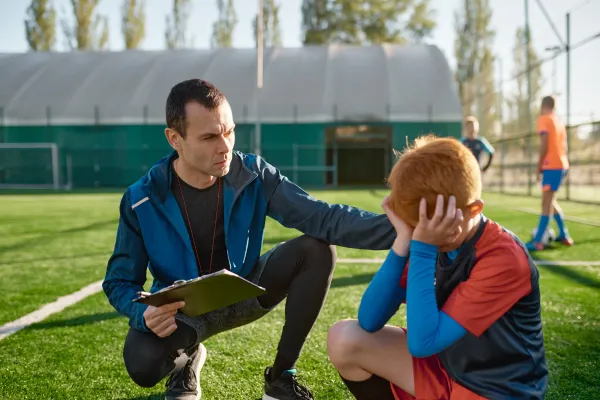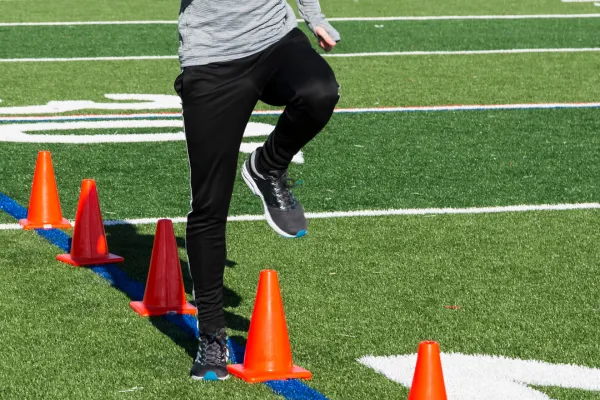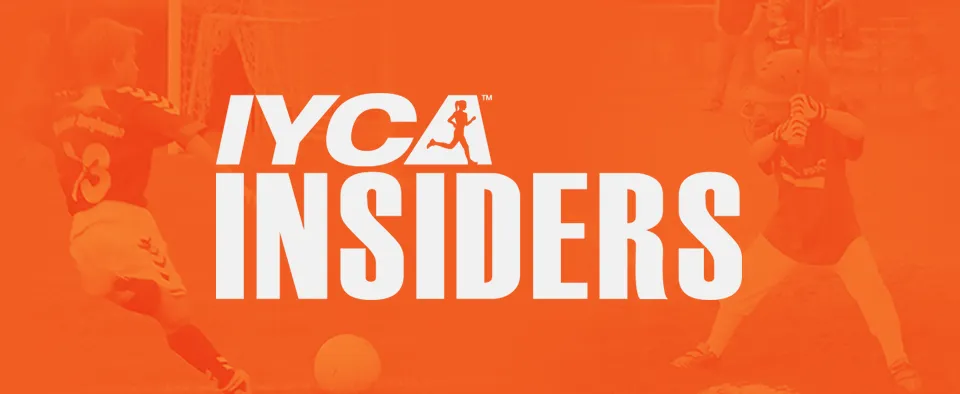
Reclaiming the Game: Science‑Backed Key Challenges in Youth Sports Today
Youth sports have long been a place where kids discover who they are—learning to lead, collaborate, persevere, and sometimes, even fail forward. These are more than games. They’re classrooms of life.
But somewhere along the way, the field changed.
The joy, creativity, and healthy development that once defined youth sports are now being challenged by trends that warrant a closer examination, backed by science, informed by experience, and driven by a deep desire to build better systems for our young athletes.
At the IYCA, we believe these challenges aren’t dead ends; they are signals. It’s an opportunity to reflect and rebuild. It’s a signal to shift. Before we look forward, we need to understand where we are. Here are five critical realities shaping youth sports today and the opportunities that lie within them.
1. Early Specialization: A Shortcut with Hidden Costs
More and more children are being steered toward picking one sport by age 8 or 9. The logic often sounds something like this: “If you want to be elite, you’ve got to go all in…early and often.”
But the research says otherwise.
Early specialization is linked to significantly higher rates of overuse injuries and burnout. A widely cited study found that youth who specialized in one sport were 70% more likely to experience serious overuse injuries than their multi-sport peers (Jayanthi et al., 2015). Athletes who delay specialization until later adolescence are also more likely to enjoy long-term success and satisfaction, on and off the field, court or mat.
Beyond physical risk, early specialization narrows a child’s movement vocabulary and limits their exposure to diverse coaching styles and team dynamics. Playing multiple sports fosters adaptability, creativity, and physical literacy. These benefits translate to better performance and fewer mental health challenges down the road.
The Shift:
Sport should be a space for curiosity, experimentation, and growth. When we replace exploration with pressure and performance too early, we rob kids of the joy and the long game of development that sport is meant to support.
2. Adultification: Where Fun Goes to Die
We’ve professionalized youth sports to the point that many kids no longer feel like they’re playing; they feel like they’re performing. Branded uniforms, travel tournaments, rankings, and livestreams have created an environment where children are constantly being evaluated. This pressure has consequences. By age 13, nearly 70% of children quit organized sports (Orthopaedic surgeons AAOS, 2025). The number one reason? It stopped being fun.
Fun isn’t a frivolous extra; it’s the core driver of motivation and engagement. When we focus more on outcomes than on process, we lose the opportunity to cultivate passion, persistence, and creativity. And we send the message that our kids’ worth is measured in wins and stats, rather than effort, growth, and character.
The Shift:
More play. More laughter. More unstructured, coach-free time where kids can fall in love with sport again. Fun isn’t a distraction...it’s the fuel that keeps them coming back to the game.
3. Coach Training Gaps: Development Isn’t One-Size-Fits-All
Coaching is one of the most influential roles in a young athlete’s life, yet many youth coaches receive little to no training in child development, communication, or physical literacy. If you follow us here at the IYCA, you’ve likely already prioritized education. But many coaches still haven’t; and that’s a gap we can’t afford to ignore.
Far too often, youth coaching mimics what’s seen at the collegiate or professional level. But 8-, 10-, or 13-year-olds aren’t mini-adults. Their brains, bodies, and emotional capacities are still developing, and they require a radically different approach.
This mismatch can lead to emotional harm, burnout, overuse injuries, and even long-term performance setbacks. Young athletes don’t just need instruction; they need connection. They need coaching that sees the whole person, not just the stat sheet.
And it’s not just what we know-it’s how we apply it. How we talk to kids. How we handle their mistakes. How we help them separate their performance from their self-worth. Coaches are shapers of identity, not just skill.
That’s why evidence-based coaching matters.
We’re in an age where a single viral clip can influence the way someone runs a practice. But good coaching isn’t built on charisma or trends. It’s built on science, on what research tells us about how kids learn, develop, and thrive. You don’t need the latest guru from YouTube. You need grounded, proven methods backed by developmental theory, movement science, and years of best practice.
Coaches who pursue real education, not shortcuts, create safer, stronger, more sustainable environments. They build athletes who last.
The Shift:
Coach education shouldn’t be optional; it should be essential. And that education must be rooted in science, not hype. Let’s raise the bar for what youth coaches know, do, and model. Because when coaches commit to developmentally appropriate, evidence-based training, everyone wins…especially the kids.
The Certified Athletic Development Specialist by the International Youth Coaching Association is a great place to start!

4. Mental Well-being: Pressure Without Support
Sport has the potential to protect and promote mental well-being, but it can also become a source of stress, anxiety, and identity pressure if we’re not intentional. The rise of early specialization, adult-level competition, and a culture of constant comparison has led to increased rates of burnout and mental fatigue in young athletes.
They aren’t “soft”, they are tired, burnt out, and maxed out! Know the difference.
Athletes are often praised for being “tough,” but not always supported in becoming resilient. Resilience isn’t built through silence or stoicism; it’s nurtured through safe environments, reflection, failure without fear, and access to tools like breathwork, visualization, and emotional regulation.
But here’s what’s often left out of the conversation:
Coaches need this too.
We cannot expect young athletes to develop mental agility, emotional control, and self-awareness if we as coaches aren’t modeling it ourselves. Coaching is emotionally demanding work. We carry the weight of other people’s kids, we invest in outcomes we can’t always control, and many of us were raised in a system that taught us to grind and suppress rather than pause and process.
When coaches practice mental skills–when we breathe before reacting, reflect on our own triggers, manage our own stress, and stay anchored to our purpose–we become more effective, more trustworthy, and more grounded. We create safer environments where athletes feel seen, not just coached.
Mental well-being is not a one-way lesson passed from adult to athlete–it’s a shared human experience that requires ongoing practice. When coaches care for themselves, their athletes benefit too. It’s not self-indulgent. It’s leadership.
The Shift:
Mental skills training shouldn't be seen as extra. It should be foundational. When we embed emotional literacy and psychological safety into practice, we don’t just produce better athletes–we help shape healthier humans.
We need coaches who view emotional strength and mental recovery with the same seriousness as strength training and conditioning. Coaches who build a culture where self-awareness, compassion, and regulation are skills practiced by everyone in the gym, on the field, or in the weight room–including the adults.
5. Coaching Gender Gap: Representation Matters

One of the quieter, but deeply concerning trends in youth sports today is the steady decline in female coaches, even as the number of girls participating in sports continues to rise. In 1972, over 90% of women’s collegiate teams were coached by women. Today, that number has dropped to around 40% (Acosta & Carpenter, 2016).
At the youth level, it’s even lower. I see it every day in every pocket of the industry.
This isn’t just a representation issue. It’s a development issue.
When coaching staffs reflect a range of experiences, communication styles, and leadership approaches, athletes benefit. Girls, especially, deserve to see women in leadership roles–to know what’s possible for them, to feel understood in ways that reflect their lived experiences.
But boys benefit too–from seeing women lead confidently, from learning diverse ways of communicating and building trust.
Male coaches bring valuable mentorship, experience, and stability to many programs. But when coaching staffs are predominantly male, or entirely male–as is often the case in youth travel and club sports–young athletes miss out on the opportunity to learn from a broader spectrum of leadership. Diverse coaching teams promote collaboration, empathy, and creative problem-solving.
Research supports this. Teams with gender-diverse leadership tend to perform better, experience higher satisfaction, and create more inclusive environments (Cook & Glass, 2014; Burton, 2015). In other words: when we coach as a team, we raise better teams.
Yet many female coaches face barriers to staying in the game, including family responsibilities, lack of mentorship, lower pay, or feeling like the “only one” in a space. If we want to see youth sports thrive, we need to stop treating female coaches as an exception and start building systems that invite them in and help them stay.
The Shift:
Intentional hiring, mentorship, and development that values the unique strengths that both male and female coaches bring. Young athletes deserve a leadership team that mirrors the diversity of the world they’re growing up in–and equips them to lead in it.
Youth sports are not broken–but they are at a crossroads.
We’re facing a generation of athletes growing up in a system that often prioritizes outcomes over experience, performance over play, and pressure over passion. But it doesn’t have to stay that way. These challenges, early specialization, adultification, underprepared coaches, mental strain, and the coaching gender gap, are not reasons to panic. They are reasons to act.
The field is calling for a different kind of leadership–one rooted in development, not just winning. One that values human growth as much as athletic success. One that recognizes that the true victory in youth sports is not a championship, but a child who grows up believing in themselves because of the experience they had in sport.
Coaches, parents, leaders: we have an opportunity to model something better. To make training age-appropriate, to elevate the voices of both men and women, to make mental well-being a priority, and to bring the fun back into the game.
Let’s stop asking what kids need to do to “keep up,” and start asking what we need to change to keep them in the game—and loving it.
The future of youth sports is being shaped right now. And it starts with us.
It’s time to raise the standard.
Coach Julie Hatfield-Still
About the Author:
Julie is an Author, CEO and Coach. She is the Brand Executive at the IYCA, the President & Founder of the Non-Profit Beyond The Game Alliance where they offer a full suite of workshops and support for teams, coaches and parents. In addition to her work as a business consultant and coach of coaches, leaders and entrepreneurs.
Julie is a Speed Development Specialist and Inner-Game Coach at the college, high school and youth levels.
Visit Julie’s Author Page
References
Acosta, R. V., & Carpenter, L. J. (2016). Women in intercollegiate sport: A longitudinal, national study—Thirty-nine year update. Brooklyn, NY: Brooklyn College.
American Academy of Orthopaedic Surgeons. (2025). Burnout as critical factor in youth sports attrition. AAOS Now.
Aspen Institute. (2019). State of Play 2019: Trends and developments in youth sports. Washington, DC: Aspen Institute.
Aspen Institute. (2020). State of Play 2020: Survey insights and recovery roadmap. Washington, DC: Aspen Institute.
Burton, L. (2015). Gendered perceptions of leadership: The case for mixed-gender coaching staffs in sport. International Journal of Sport Policy and Politics, 7(2), 205–220.
Cook, A., & Glass, C. (2014). Above the glass ceiling: When are women and racial/ethnic minorities promoted to CEO? Strategic Management Journal, 35(7), 1080–1089. https://doi.org/10.1002/smj.2179
Jayanthi, N. A., Pinkham, C., Dugas, L., Patrick, B., & LaBella, C. (2015). Sports specialization in young athletes: Evidence-based recommendations. Sports Health, 5(3), 251–257. https://doi.org/10.1177/1941738112464626
Miner, J. W. (2016, June 1). Why 70 percent of kids quit sports by age 13. Washington Post. https://www.washingtonpost.com
Utah State University & Aspen Institute Project Play. (2019). Don’t Retire Kid: National survey on youth sport participation. Logan, UT: Families in Sport Lab.
Utah State University & Aspen Institute Project Play. (2019, August 2). Don’t Retire Kid: Report shows early dropout in youth sports. GlobeNewswire.
Warner, S. (Ed.). (2024). Early sports specialization. In Wikipedia. Retrieved June 2025, from https://en.wikipedia.org/wiki/Early_sports_specialization
WinterGreen Research. (2019, December 26). Youth sports market projected to reach $77.6 billion by 2026 [Industry report].








